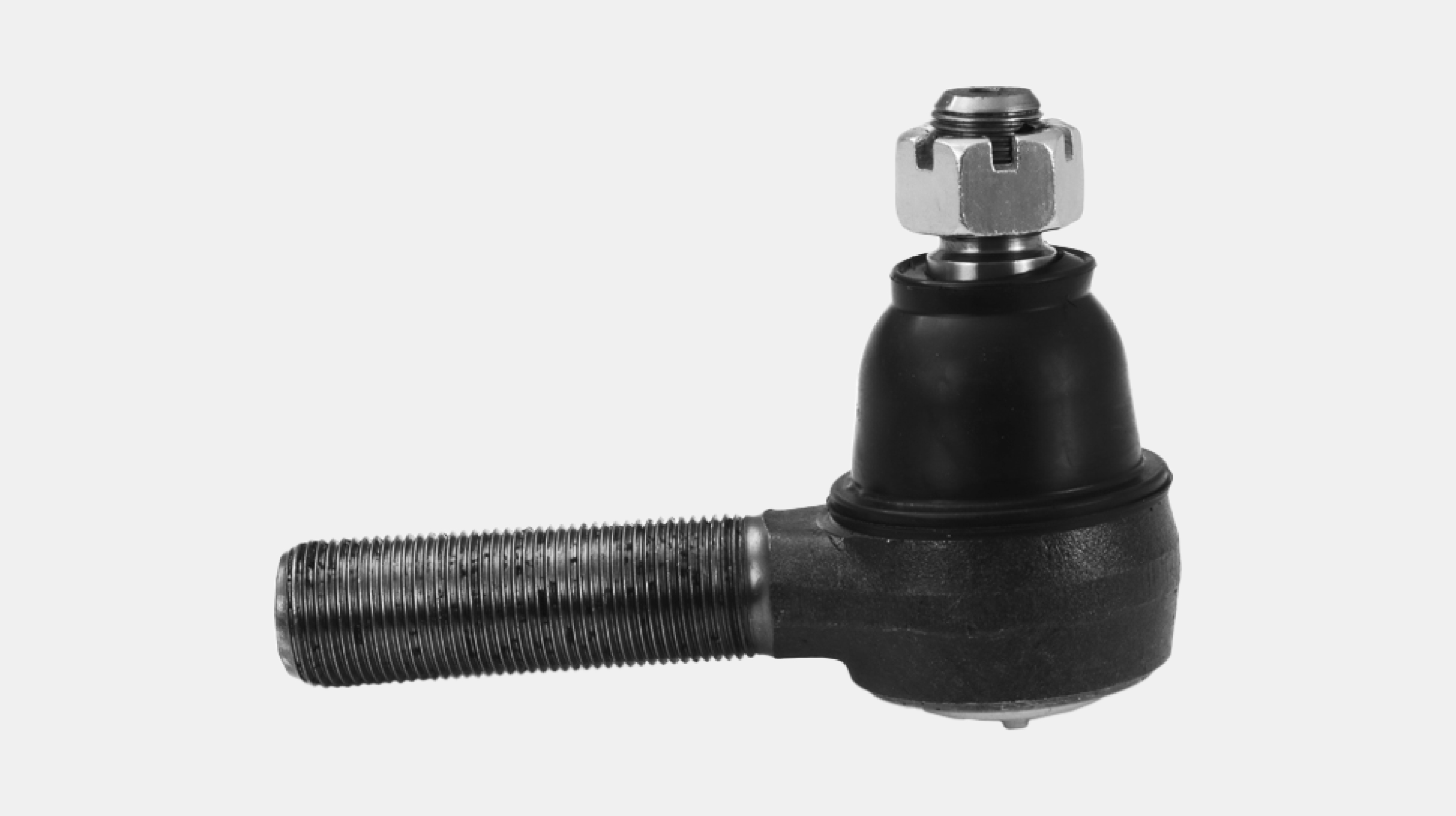What is a Tie Rod?
No matter what type of steering system is on a vehicle, they all use a common component to enable it to steer properly – the tie rod. Engaged every time the steering wheel is turned, tie rods are found on each front wheel and connect the steering gear to the steering knuckle. Tie rods serve as the pivot point between the steering rack, steering arm and steering wheel. They not only help move the wheels when the driver steers, but tie rods make turning possible.
How Do Tie Rods Work?
Tie rods serve as the pivot point between the steering rack, steering arm and steering wheel. They not only help move the wheels when the driver steers, but they make turning possible. While the recirculating ball system and rack and pinion system operate differently, both systems use a tie rod to attach the steering rack to the steering arm which is connected to the steering wheel.

Signs of a Bad Tie Rod
Since tie rods are used whenever the vehicle is steered, they are subject to wear and damage. While a tie rod can fail due to normal wear and tear, driving hazards like potholes and accidents can also damage a tie rod. If a tie rod fails, it can result in a range of effects from premature tire wear to loss of steering control. Be on the lookout for these signs of a bad tie rod end.
Uneven Tire Wear
Tires that are excessively worn on one side but have minimal wear on the other could indicate a problem with the tie rods. Do a visual inspection of the tire to look for issues.
Front End Out of Alignment
Tie rods ensure that the vehicle tracks straight and assist in steering. A failing tie rod can cause the front end to come out of alignment. If the vehicle is handling poorly, have it inspected.
Loose or Vibrating Steering Wheel
A loose tie rod can cause the steering wheel to have an excessive amount of play. The steering wheel may also shake or vibrate.
Knocking Noise
A knocking noise or other unusual sounds while turning at low speeds can be a sign of worn tie rods. As a tie rod becomes loose, it can rattle around at the joints and links, causing noise. Also, if the boot that protects the tie rod joint becomes damaged, it can allow dirt and debris in leading to grinding noise while you steer.
What Causes a Tie Rod to Fail?
While tie rods are designed to last for many years, they can fail. Besides normal wear and tear, tie rods can fail due to rough road conditions and insufficient lubrication.
Rough Road Conditions
Driving over potholes, bumps and other road hazards can put stress on tie rods which can cause them to prematurely fail.
Insufficient Lubrication
Some tie rods have grease fittings that require maintenance. Failing to grease them can lead to increased friction and premature failure. A damaged or cracked boot can let grease leak out and allow dirt and grime in which can cause the tie rod to wear out quickly.
Severe Impacts
A severe impact from hitting a curb or other obstruction can cause damage to tie rods and other steering and suspension components.
How to Prevent Tie Rod Failure
There are a couple of steps you can take to help prevent tie rod failure and extend the life of your tie rods.
Regular Maintenance
For serviceable tie rods, keeping up on regular maintenance like greasing is key to reducing friction and preventing premature joint wear. Make sure to use the right amount of grease, using too little will still put you at risk for problems with friction while if it is over greased, it could rupture the dust boot and allow dirt and contaminants in.
Driving Habits
While it’s hard to avoid roads with bumps and potholes, try to reduce your speed if you’re going to have a direct hit with a road hazard. Doing so might minimize the stress put on the tie rods.
Learn more about QUALITY HEAVY-DUTY CHASSIS PARTS, FIND THE RIGHT CAR PART, or FIND A LOCAL REPAIR SHOP today.
The content in this article is for informational purposes only. You should consult with a certified technician or mechanic if you have questions relating to any of the topics covered herein. DRiV and its affiliates (including Federal-Mogul Motorparts LLC) will not be liable for any loss or damage caused by your reliance on any content.